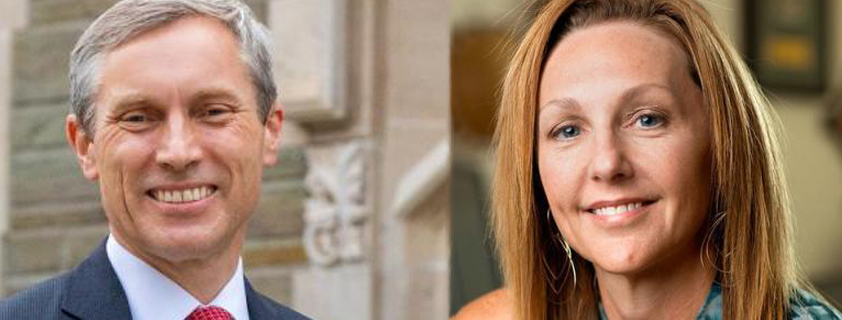Latest News

Alexander Colvin, the Kenneth F. Kahn Dean and Martin F. Scheinman Professor of Conflict Resolution at the ILR School, captured the audience’s attention with historical anecdotes, quotes, and analogies at the first keynote address for Emerging Tech Dialogues - The Future of Work on October 14, 2025,.
Walking participants through examples of previous employment transformations like textile and steel manufacturing, Colvin showed how technological change usually transforms work: improving organizational productivity and individual job quality but often reducing the number of jobs in that industry and altering the nature of the work itself.
Cornell, like the rest of the world, is facing transformations on multiple fronts, but Colvin still recommends thinking critically about the approach to technological change. Can advancing technology be designed and implemented to enhance human work rather than diminish it?
The second keynote, presented by Elizabeth “Beta” Mannix, the Ann Whitney Olin Professor of Management at the Samuel Curtis Johnson Graduate School of Management, explored how individuals cope with change and stress.
Mannix used humor, illustrations, and research to lead the audience through the concept of resilience as a set of learnable skills. This suite of skills can be leveraged to help individuals better navigate stress and uncertainty.
Rather than avoiding discomfort or pretending stress doesn’t exist, the people who practice resilience will acknowledge challenges, connect with their values and community, and take intentional action to move forward.
Mannix explained these three steps as the ACT Framework:
- Acknowledge: name the stressor and move it from emotional reactivity to strategic thinking.
- Connect: reach out for support and reconnect with personal values and purpose.
- Take Action: identify small, meaningful steps to move forward and build confidence.
Resilience can also be strengthened with the help of colleagues who provide empathy, support, and clarity. This kind of support strengthens both the giver and the receiver. And whether stress is reactive (replaying an old argument) or anticipatory (dreading a coming change), what matters most is how a person responds, focuses on what they can control, and supports others through shared challenges.
In her final slide, Mannix showed an example of a cracked and repaired bowl, enhanced through a Japanese art form known as Kintsugi. She compared personal resilience to this style of repairing broken pottery with gold—emphasizing that the individual is not just restored after hardship but changed for the better.
Watch the event website for photos and links to the recorded sessions.


Comments?
To share feedback about this page or request support, log in with your NetID